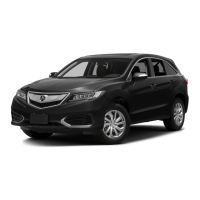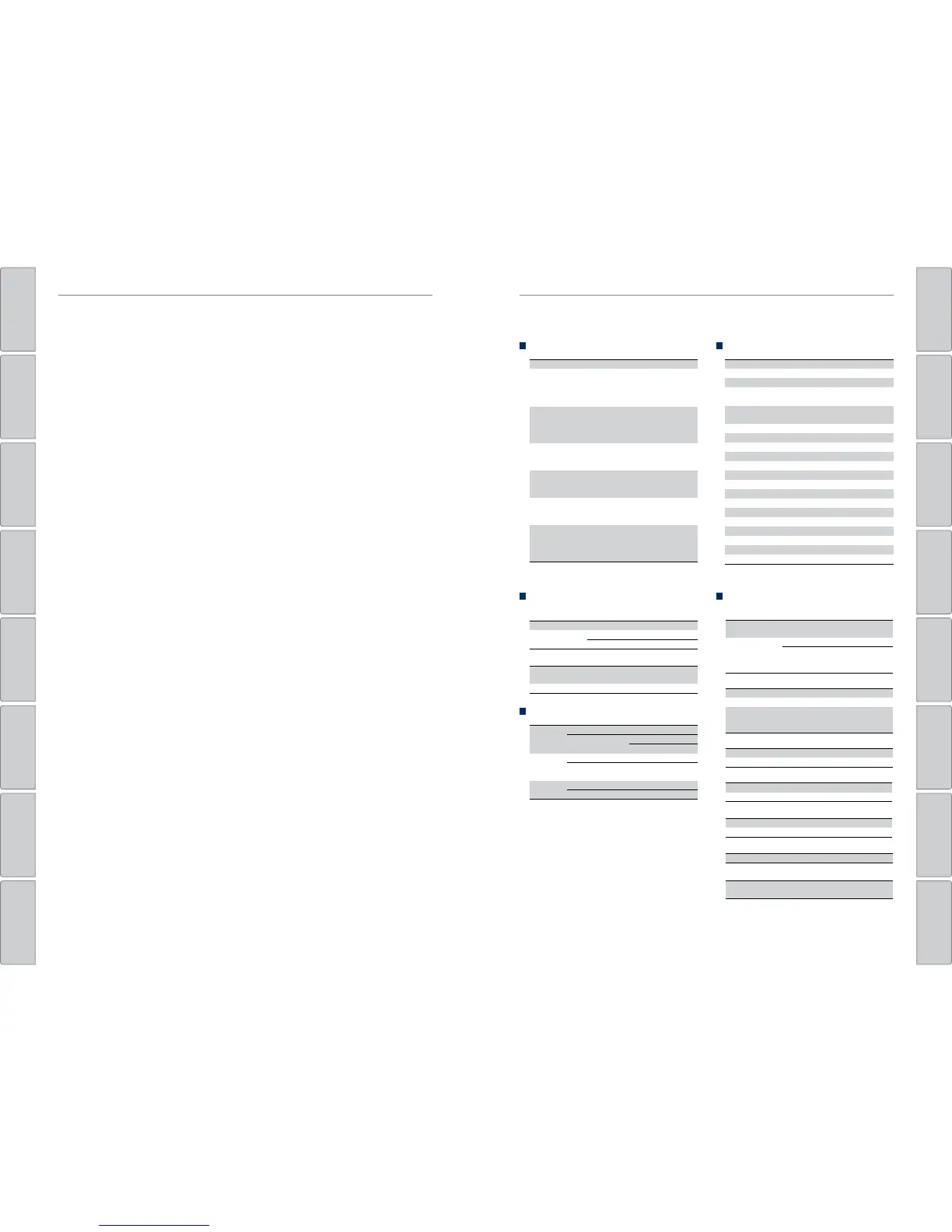142 | | 143
SPECIFICATIONSMAINTENANCE
TABLE OF
CONTENTS
INDEX
VISUAL INDEX
VOICE COMMAND
INDEX
SAFETY
INFORMATION
CLIENT
INFORMATION
INSTRUMENT
PANEL
SPECIFICATIONS
VEHICLE
CONTROLS
MAINTENANCE
AUDIO AND
CONNECTIVITY
HANDLING THE
UNEXPECTED
BLUETOOTH®
HANDSFREELINK®
DRIVING
ACURALINK®
NAVIGATION
Testing of Readiness Codes
Your vehicle has “Readiness Codes” as part of the onboard self-diagnostic system.
Some states refer to these codes as a test to see if your vehicle’s emissions
components are working properly. The codes may not be read if you go through the
testing just after the battery has gone dead or been disconnected.
To check if they are set, turn the vehicle on without starting the engine. The
malfunction indicator lamp will come on for several seconds. If it goes off, the
readiness codes are set. If it blinks five times, the readiness codes are not set.
If you are required to have your vehicle tested before the readiness codes are set,
prepare the vehicle for retesting by doing the following:
1. Fill the gas tank to approximately 3/4 full.
2. Park the vehicle and leave the engine off for 6 hours or more.
3. Make sure the ambient temperature is between 40°F and 95°F (4°C and 35°C).
4. Start the engine without touching the accelerator pedal, and let it idle for 20
seconds.
5. Keep the vehicle in Park (P). Increase the engine speed to 2,000 rpm, and hold it
there for about 3 minutes.
6. Let the engine idle with your foot off the accelerator for 20 seconds.
7. Select a nearby, lightly traveled major highway where you can maintain a speed
of 50 to 60 mph (80 to 97 km/h) for at least 20 minutes. Drive on the highway
with the vehicle in Drive. Do not use cruise control. When traffic allows, drive
for 90 seconds without using the accelerator pedal. (Vehicle speed may vary
slightly; this is OK.) If you cannot do this for a continuous 90 seconds because of
traffic conditions, drive for at least 30 seconds, then repeat two more times (for
a total of 90 seconds).
8. Drive in city/suburban traffic for at least 10 minutes. When traffic conditions
allow, let the vehicle coast for several seconds without using the accelerator
pedal or the brake pedal.
9. Park the vehicle and leave the engine off for 30 minutes.
The readiness codes are erased when the battery is disconnected, and set again
only after several days of driving under a variety of conditions.
If a testing facility determines that the readiness codes are not set, you may be
requested to return at a later date to complete the test, or see your dealer.=
Vehicle
SPECIFICATIONS
Tires
Model Acura RDX
No. of Passengers:
Front 2
Rear 3
Total5
Weights:
Gross Vehicle
Weight Rating
U.S.: 4,850 lbs (2,200 kg )
*1
4,982 lbs (2,260 kg )
*2
Canada:
2,260 kg
Gross Axle Weight
Rating (Front)
U.S.: 2,557 lbs (1,160 kg )
*1
2,623 lbs (1,190 kg )
*2
Canada:
1,190 kg
Gross Axle Weight
Rating (Rear)
U.S.: 2,293 lbs (1,040 kg )
*1
2,381 lbs (1,080 kg )
*2
Canada:
1,080 kg
Gross Combined
Weight Rating
U.S.: 6,349 lbs (2,880 kg )
*1
6,482 lbs (2,940 kg )
*2
Canada:
2,940 kg
Air Conditioning:
Refrigerant Type HFC-134a (R-134a)
Charge Quantity 15.2 – 16.9 oz (430 – 480 g)
Lubricant Type ND-OIL8
Headlights (High Beams) LED
Headlights (Low Beams) LED
Fog Lights
*
55W (H11)
Side Turn Signal Lights
(on Door Mirrors)
LED
Front Side Marker Lights 3CP
Rear Side Marker/Brake/Taillights LED
Back-Up Lights 16W
Rear Turn Signal Lights 21W (Amber)
High-Mount Brake LightLED
Rear License Plate Light 5W
Cargo Area Lights 5W
Vanity Mirror Lights 1.4W
Interior Lights
Map Lights LED
Ceiling Light8W
Door Courtesy Lights 2CP
Console Compartment Light 1.4W
Glove Box Light 1.4W
Center Pocket LightLED
Front turn signal/Parking lights/
Daytime running lights
LED
Light Bulbs
Engine and Fuel Fluids

